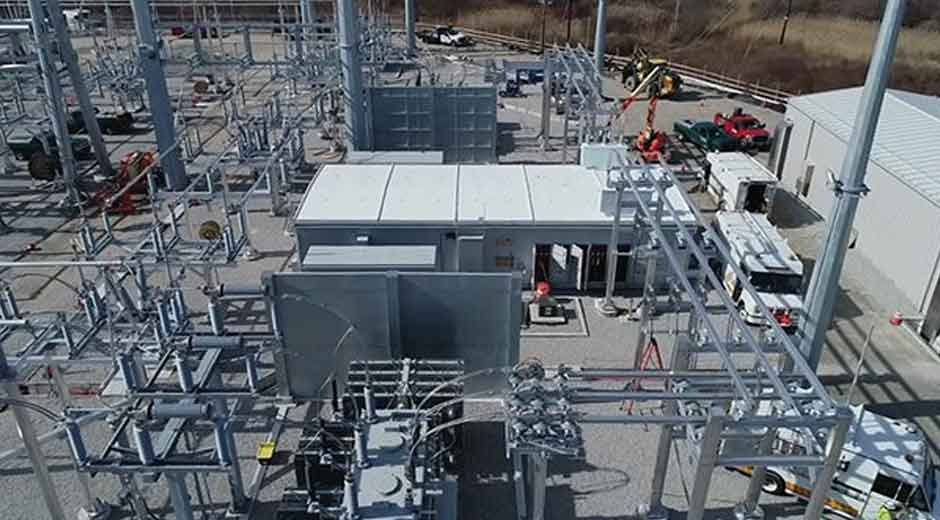Importance of Structural Reinforcement in Transformer Fire Barriers
- Enhancing Fire Containment Capabilities
Structural reinforcement significantly improves a fire barrier’s ability to contain flames and heat generated during transformer fires. Without adequate reinforcement, barriers may crack, warp, or collapse under thermal stress. Reinforcements such as steel rebar, mesh, or composite materials distribute thermal and mechanical stresses evenly throughout the barrier, thereby preserving its integrity. This containment is crucial for isolating the fire, thereby reducing the risk of damage to adjacent equipment or buildings. The ability of transformer blast walls and other fire barriers to maintain their shape and strength under extreme heat prevents fire from breaching the protective enclosure, thereby limiting fire spread and potential hazards.
- Increasing Mechanical Strength and Longevity
Transformer fire barriers must endure not only fire but also environmental and mechanical forces during their operational lifetime. Structural reinforcement provides the mechanical strength required to resist impacts, vibrations, and weather-related wear. These barriers often face dynamic conditions such as wind pressure or accidental contact, which can weaken non-reinforced structures. Incorporating reinforcement materials ensures that the barrier remains durable over time, maintaining its protective function without frequent repairs or replacement. This durability is essential for industrial and utility settings, where continuous, reliable performance is necessary to safeguard costly equipment and maintain operational safety.
- Improving Resistance to Thermal Shock and Stress
Thermal shock occurs when a material is subjected to rapid temperature changes, resulting in cracking or failure. During a transformer fire, fire barriers undergo rapid heating, and once the fire is extinguished, they cool quickly. Structural reinforcement helps the barrier withstand these sudden temperature shifts by improving flexibility and reducing brittleness. Reinforcements enable the barrier to absorb and distribute thermal expansion and contraction forces, minimizing damage from thermal stress. This resistance to thermal shock is crucial for maintaining the barrier’s structural integrity and fire containment properties after an incident, enabling safer inspections and repairs without risking collapse or failure.
- Supporting Compliance with Safety and Regulatory Standards
Fire barriers used in transformer applications must comply with strict safety and building codes to ensure adequate protection. Structural reinforcement plays an integral role in meeting these regulatory requirements by enhancing barrier performance during fire exposure. Many standards specify minimum reinforcement details and material specifications that guarantee fire barriers can achieve the required fire resistance ratings. By incorporating proper reinforcement, manufacturers and engineers can certify that barriers meet or exceed these standards, contributing to overall workplace safety and regulatory compliance. This alignment with codes ensures that transformer installations remain secure and less vulnerable to fire-related disruptions.
- Facilitating Design Flexibility and Customization
Structural reinforcement enables greater flexibility in the design and customization of transformer fire barriers. Different transformer sizes, layouts, and site conditions require tailored fire protection solutions. Reinforcements can be adapted to fit various shapes and thicknesses of fire barriers without compromising strength or effectiveness. For example, reinforced concrete or composite panels can be molded into specific forms to fit unique spatial constraints. This adaptability allows engineers to develop fire barriers that integrate seamlessly with existing infrastructure while maintaining robust fire containment capabilities. The ability to customize reinforced barriers supports a wider range of transformer installations, enhancing overall safety outcomes.
- Minimizing Risk of Structural Collapse During Fire Events
One of the most critical roles of structural reinforcement is preventing the collapse of fire barriers during intense fire events. Collapse not only compromises fire containment but also creates additional hazards such as falling debris and exposure of flammable materials. Reinforcement helps maintain the barrier’s stability by reinforcing load-bearing components and enhancing resistance to fire-induced weakening. In particular, materials such as steel provide tensile strength that concrete alone lacks, preventing catastrophic failure when exposed to extreme temperatures. Maintaining structural stability during fire incidents is crucial for protecting personnel, equipment, and the surrounding infrastructure associated with transformers.
- Supporting Rapid Post-Fire Recovery and Maintenance
Following a transformer fire, the condition of the fire barrier has a significant impact on the speed and safety of recovery efforts. Structural barriers tend to sustain less damage, making inspections, repairs, and cleaning more straightforward and less costly. Reinforced barriers can often be restored to service with targeted maintenance rather than complete replacement. This durability reduces downtime and associated operational losses. Moreover, a structurally sound barrier reduces the risk of unexpected collapse during post-fire work, enhancing safety for maintenance personnel. Efficient recovery supported by reinforced fire barriers helps minimize the broader impact of transformer fires on facility operations.
Structural reinforcement in transformer fire barriers is a crucial component that ensures these safety structures fulfill their protective role effectively and reliably. By enhancing fire containment, mechanical strength, and thermal resistance, reinforcement contributes to the overall durability and stability of fire barriers. These reinforced barriers comply with stringent safety regulations and provide flexibility in design to meet diverse installation needs. Most importantly, structural reinforcement reduces the risk of collapse during fire events and supports faster recovery afterward. Integrating robust reinforcement strategies in transformer fire barriers safeguards critical electrical infrastructure and helps maintain safety for personnel and surrounding assets.













